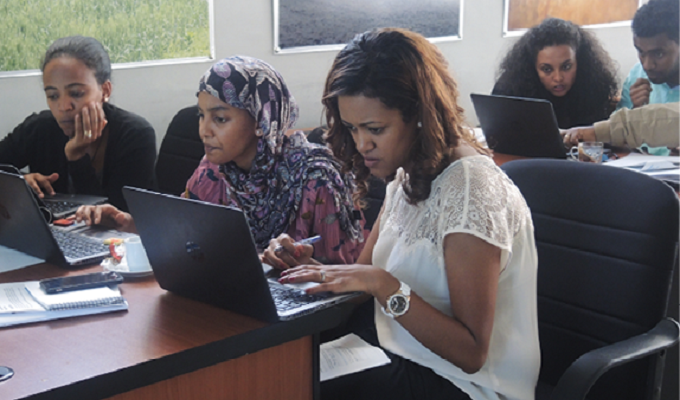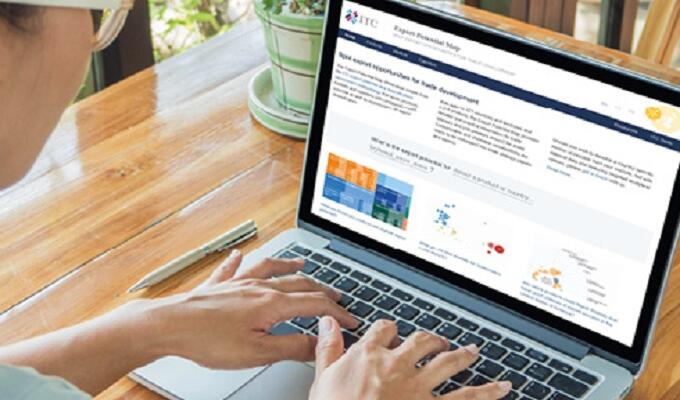


Equipping SMEs with the information they need to access markets
Even in the information age, the kinds of information that businesses need when trying to sell into new markets can be hard to find. Data on international demand trends and information about tariff levels and requirements – like health and safety standards in target markets – tends to be fragmented, unavailable or expensive. Voluntary sustainability standards are increasingly de facto requirements to enter some lucrative market segments. Even before companies can grapple with the costs of certification they must understand which standards are relevant in a given market and what they would need to do to comply.
The costs and time associated with such intelligencegathering weigh heavily on small and medium-sized enterprises (SMEs), especially those in developing countries, which tend to be less internationally competitive in the first place. As a result, it becomes harder than it should be for SMEs to buy or sell across borders and connect to value chains.
Moreover, even when firms are able to internationalize, prices may fall if they end up contributing to a supply glut. With better knowledge of market demand and price trends, SMEs would be able to make better trade-related decisions.
The responseMaking trade information available to businesses in developing countries has been ITC’s raison d’être since its founding. Starting in 1999, ITC created a suite of online market intelligence tools that are completely free for users in developing countries. These global public goods – Trade Map, Market Access Map, and Standards Map – hold data from more than 190 countries and make it easy to visualize through tables, graphs and maps. Some of the data in the tools – on non-tariff measures, ad valorem equivalent tariffs and tariff quotas – cannot be found elsewhere; ITC experts calculate the statistics and share them with other international agencies.
ITC market intelligence tools help users – exporters, importers, journalists, researchers, and others – navigate the constantly changing landscape of international trade and regulations. For instance, a would-be exporter can use Trade Map to discover which markets for her SME’s products have been the most dynamic in recent years and access contact information for importers in those markets. She can then advance to Market Access Map to see whether her country benefits from preferential tariff access to a target market and to understand the tariff rates and non-tariff measures that would apply to her products. Finally, Standards Map would allow her to identify any relevant sustainability standards and determine whether they might be worth adopting.
A parallel component of ITC’s work is to train representatives from businesses, governments, trade and investment support institutions (TISIs) and the media in the use of the market intelligence tools, contributing to better analysis and a fact-based understanding of trade.
In 2016, the number of registered users of ITC market intelligence tools surpassed 600,000, with over 3.2 million online visits.
The resultsIn 2016, ITC market intelligence tools helped generate around $300 million in trade transactions, based on businesses’ responses to ITC’s annual survey of users.
One such business was Maneks Dis Ticaret, an Istanbulbased trading company dealing in iron and steel products, cement and metallic ores. Yilmaz Manisali, its director of business development, said that the up-to-date trade data in ITC tools, especially Trade Map, had helped the company make profitable business decisions, bolstering sales while minimizing costs.
‘ITC tools have been instrumental for us in the planning stage – they have allowed us to identify our target markets where we later enjoyed considerable sales,’ Manisali said. He explained that ITC tools had not only helped the company increase export revenues by targeting the right markets, they had made it possible to reduce shipping costs. ‘We have studied export-import routes of certain products and through this information were able to establish trading routes in the opposite direction of busy lines, thus allowing us to have very reasonable freight rates,’ he said.
Providers of business advisory services also use ITC tools to help their clients overcome obstacles to accessing foreign markets.
‘ITC tools are of great use in our export service’, said Lorena Zamudio Benitez, general manager at Dragon Pacific International, a company based in Mexico’s Michoacán state that provides consulting services to exporters. ‘They help us evaluate potential markets and to find tariffs and non-tariff measures; and with this information we can advise our clients which products to promote abroad.’
A manager at Bors Dis Ticaret, a medium-sized Turkish exporter of baby clothes and home furniture, said ‘ITC’s market analysis tools are like a compass for us. They provide highly detailed information for our sector and guide us to make the right decisions at the end of the day.’
Feedback on ITC’s market intelligence training work has been similarly positive. In Viet Nam in 2016, ITC trained some 50 trainers affiliated with the Viet Nam Chamber of Commerce and Industry and the Foreign Trade University in the use of the tools, who in turn ran courses around the country for more than 600 representatives from businesses and the government. According to a participant survey 42% of the businesses increased exports following the training, while slightly higher proportions connected to new clients or markets either for exporting or importing.
The futureITC’s suite of global public goods in trade intelligence is set to expand. ITC experts are constructing what will be the world’s most comprehensive database on preferential rules of origin associated with bilateral and regional free trade agreements (FTAs). Businesses, especially SMEs, often struggle to understand these rules and related administrative procedures, with the result that they cannot utilize the market access negotiated in an FTA. The new database, which will be operational by the end of 2017, will give users visibility and practical guidance on origin-related rules and procedures.
Following avid interest in the Export Potential Map at its demonstration launch in late 2016, ITC is preparing a wider rollout in 2017. Information about potential for trade in services and for building export-oriented regional value chains is being added to the methodology to give clients a complete picture of promising sectors for export growth and diversification.



